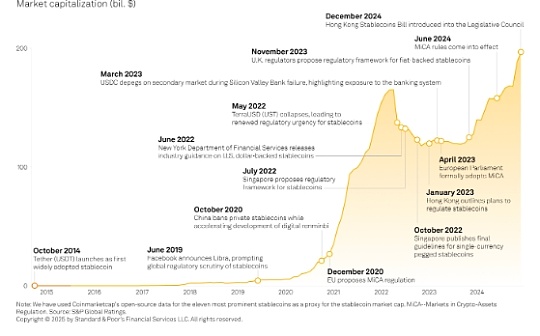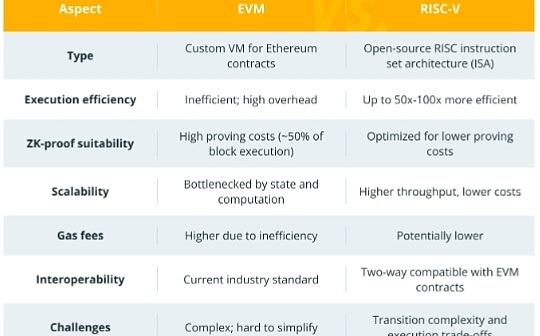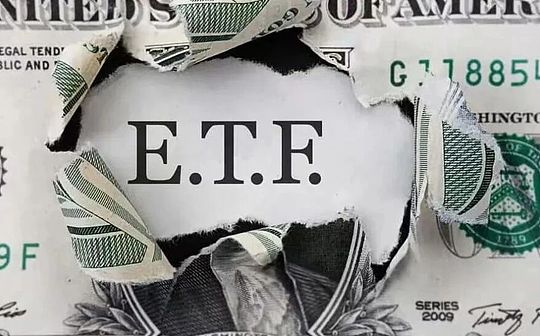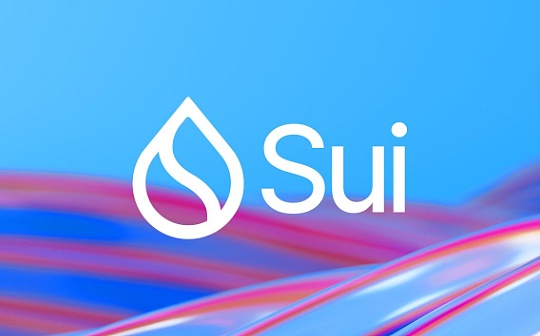
Author: Bradley Peak, CoinTelegraph; Compilation: Baishui, Bitchain Vision
1. What is Sui Network?
Sui Networks is a novel blockchain platform designed to address industry challenges such as scalability, speed and cost.
Launched in May 2023 by Mysten Labs, Sui was founded by former Meta engineers involved in the Facebook Diem project (formerly Libra) to provide a decentralized solution that can handle large volumes of transactions with minimal latency.
One of Sui’s outstanding features is its parallel transaction processing.While other networks such as Solana and Avalanche use similar technologies, Sui stands out by reducing the complexity of coordination among validators.
This simplified approach makes the network more efficient and scalable, maintaining high throughput even with high traffic without bottlenecks that usually affect other blockchains.
As part of this, Sui introduces an object-centric model.This not only allows finer granular transaction processing; it also allows digital assets to grow and change over time, rather than staying the same.
This makes the platform ideal for applications involving non-fungible tokens (NFT), GameFi and decentralized finance (DeFi), whose assets often need to be updated or modified.By contrast, blockchains such as Solana and Avalanche are optimized for speed, but lack this flexibility in handling dynamic data.
In fact, Sui has achieved significant growth as of September 2024, with more than 18.19 million active accounts and processed more than 4.58 billion transactions.These figures highlight Sui’s widespread adoption among developers and users, especially for decentralized applications (DApps) that require high performance and low latency.
2. The core technology behind Sui blockchain
Sui’s core technologies include its innovative Move programming language, advanced parallel transaction processing and delegated proof of stake (DPoS) consensus mechanism, making it a highly scalable and efficient blockchain.
Architecture and consensus mechanism
Sui’s architecture relies on its Move programming language, which was originally developed for the Diem blockchain.
Compared to other popular languages such as Solidity (used on Ethereum), Move is able to create smart contracts and digital assets in a more flexible and secure way.This makes it ideal for gaming, DeFi and NFTs, where applications require assets to change their state without being plagued by typical transaction bottlenecks.
The core of Sui is the use of a delegated Proof of Stake (DPoS) consensus mechanism.This mechanism allows users to stake their Sui tokens to support validators responsible for verifying and processing transactions.We will introduce it in detail later.
Do you know?The Move programming language is specially designed to prioritize resource ownership and security, making it particularly resistant to common vulnerabilities such as reentry attacks.The language itself’s focus on asset ownership ensures that digital assets are managed safer.
Technologies that support scalability and efficiency
Sui’s view on parallel transaction processing is one of its most innovative technologies.Sui is tested to process up to 297,000 transactions (TPS) per second, far exceeding the capacity of other blockchains that support parallel transaction processing, such as Solana, Avalanche, and Polkadot.
In addition, Sui adopts a novel transaction sharding method where different transactions are processed by different validators throughout the network.In short, this approach allows blockchain to handle workloads more efficiently because tasks are distributed across the network, reducing the risk of congestion and ensuring transaction fees remain at low levels even under high demand.
Ensure security and low latency
To keep the latency low, Sui uses an optimization consensus engine called Mysticeti, which greatly reduces the final time of the transaction.
In blockchain terms, “finality” refers to the point where transactions are considered irreversible.Sui’s consensus design enables sub-second finality, which is critical for applications where speed is critical, such as gaming or high-frequency DeFi transactions.
Enhance security with multi-layer protection.The network’s object-centric model allows developers to write safer smart contracts by limiting attack vectors that are often associated with blockchain platforms.In addition, Sui’s DPoS mechanism ensures that validators are motivated to act in the best interests of the network and can quickly identify and punish any malicious behavior.
3. SUI Token Economics
SUI tokens are native to the Sui blockchain used to pledge, govern and incentivize network participants.Its cap supply is 10 billion tokens allocated to community development, contributors, investors and development.
SUI tokens play a central role in maintaining network operations and incentivizing participants.For example:
-
Verifiers receive rewards for staking SUI tokens and verifying transactions, which helps ensure network security.
-
Community reserves grants and incentives support developers to encourage them to build DApps that drive platform innovation.
-
Users can also stake their SUI tokens to support validators, thus earning rewards.Additionally, users participate in network governance by voting on key proposals, giving them a say in shaping Sui’s future.
Finally, the total supply cap for SUI is 10 billion tokens distributed in several categories to support long-term growth and decentralization of the network:
-
50% reserved for the community, including commissioned programs, grants, R&D and validator incentives.
-
20% allocated to early contributors.
-
14% allocated to investors.
-
10% held by Mysten Labs for development purposes.
-
6% are allocated to application testers and community access programs.
4. Sui blockchain use cases
From DeFi to gaming and supply chain management, Sui’s architecture supports fast and efficient transactions, making it an attractive platform for developers looking to build on cutting-edge blockchains.
Decentralized Finance (DeFi)
Due to its advantages, Sui has quickly become a strong competitor in the DeFi field.Some of the key DeFi platforms to integrate with Sui include:
-
DeepBook:Sui’s native decentralized exchange (DEX) acts as a central limit order book, allowing users to trade assets at low fees and high liquidity.The infrastructure supports an increasing number of DeFi applications and helps create a more seamless transaction experience.
-
Turbos Finance:An automated market maker (AMM) built on Sui that provides unmanaged services to provide liquidity and token exchange.The project is powered by Jump Crypto, providing users with an efficient DeFi environment with competitive benefits.
Games and NFTs
As discussed, Sui’s object-centric model makes it particularly suitable for dynamic assets such as NFTs and in-game items that can evolve over time.Here are two examples:
-
SUI 8192:A decentralized puzzle game built on the Sui network, in which each player’s actions are recorded as blockchain transactions.The game casts NFTs to represent the player’s achievements and demonstrates Sui’s ability to handle large-scale game operations.
-
Grand Cross:Metaworld: This meta-universe game was developed by Netmarble and uses Sui’s low-cost infrastructure to support the high-capacity gaming ecosystem.Players can create, manage and trade digital assets, including NFTs, directly on the Sui blockchain.
Do you know?Unlike many other blockchains, the gas fees for these blockchains are determined entirely by computing requirements, while Sui charges fees based on the amount of storage consumed by the required calculations and transactions.This is especially innovative for use cases such as NFT and dynamic assets, as users can also receive storage refunds when deleting or updating on-chain data.
Supply Chain Tracking
Sui can handle the complex data interactions required for transparent supply chain management, ensuring that the journey of each product is tracked securely and efficiently on the blockchain.
While similar projects have been implemented on other blockchains, such as IBM’s Food Trust on Hyperledger and VeChain for luxury tracking, supply chain assets can be produced and distributed in various ways with Sui’s object-centric modelPhase updates in real time.
This means that while blockchain-based supply chain solutions have proven to be feasible and effective, Sui has the right architecture to fully realize the potential of blockchain in supply chain tracking.
5. The history of SUI blockchain
Sui Blockchain was launched in May 2023 and by September 2024, the number of active accounts has rapidly grown from 1 million to over 18 million, with innovative features such as zkLogin, with a total locked value (TVL) of more than $500 million.
Here is an overview of Sui’s blockchain history:
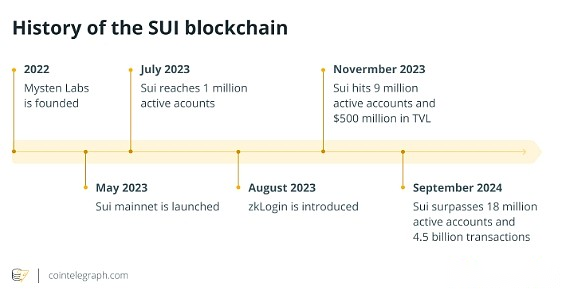
-
Early 2022 – Start:After Meta’s Diem project was abandoned, a group of former engineers formed Mysten Labs with the goal of building a new blockchain to overcome the scalability and performance limitations of existing platforms.
-
May 3, 2023 ——Released by the main website:Sui officially launched its main network to open the platform to the public.Supported by over 100 validators and 400 nodes, developers can now build and deploy DApps on the network.
-
July 2023 – 1 million active accounts:Just two months after its launch, Sui reached an important milestone, recording over 1 million active accounts.
-
August 2023 — zkLogin released:Sui launches zkLogin, an innovative technology that allows users to log in to Web3 applications using their existing credentials on platforms such as Google and Facebook.This feature greatly improves the onboarding experience and bridges the gap between Web2 and Web3.
-
November 2023 – 9 million active accounts and $500 million TVL:Sui has grown exponentially, reaching 9 million active accounts, with its DeFi protocol’s total locked value (TVL) of more than $500 million, marking a significant leap in adoption.
-
2024 – Continuous Growth:Sui’s network has over 18.19 million active accounts and has processed 4.58 billion transactions.

